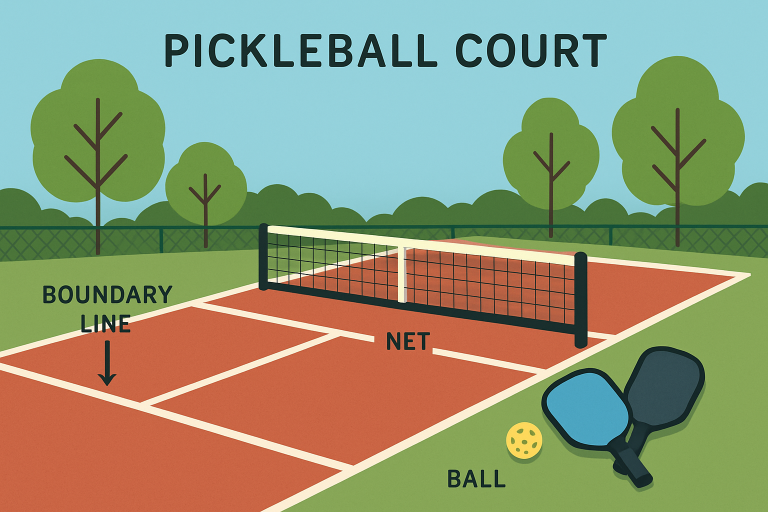Table of Contents
- 1 Why Pickleball Has Gained Popularity
- 2 Basic Steps to Building a Pickleball Court
- 3 Choosing the Ideal Location
- 4 Evaluating Court Surface Materials
- 5 Additional Costs to Consider
- 6 Permits, Zoning, and Community Considerations
- 7 Design and Accessibility Features
- 8 Longevity Tips
- 9 Further Resources for Aspiring Court Builders
Why Pickleball Has Gained Popularity
Over the past decade, pickleball has transitioned from a niche activity to a widely embraced recreational sport. Its surging popularity is attributed to its easy-to-learn rules, suitability for all ages, and friendly social environment. The sport is among the fastest-growing in the United States, attracting players nationwide in neighborhoods, parks, and organized leagues.
With enthusiasm at an all-time high, many homeowners and community organizations are exploring the cost of adding a dedicated outdoor court. For anyone beginning this process, a common question is how much does it cost to build a pickleball court, since understanding the essential steps and, most importantly, the financial investment is the logical starting point for planning a successful project that delivers on both fun and value.
Basic Steps to Building a Pickleball Court
Building an outdoor pickleball court requires careful planning and execution across several stages to ensure durability and playability. Key steps include evaluating the property for suitable space, checking local zoning and permit regulations, selecting appropriate base and surface materials based on budget and climate, and incorporating essential features like fencing, nets, and lighting. Proactive planning is crucial for identifying potential challenges and establishing a realistic budget. Project expenses should also account for site preparation, drainage, and grading to create a level foundation, with research into industry guides and local contractors recommended for material and method comparisons.

Choosing the Ideal Location
The placement of your pickleball court impacts everything from game quality to neighborhood harmony. Choose a location with level, well-drained ground to prevent puddling after rain and reduce the risk of future settlements or cracks. Avoid areas overhung by large trees, as ongoing leaf drop and root systems may lead to extra maintenance and uneven surfaces. Whenever possible, orient the court north-south, which minimizes the impact of the rising and setting sun on players’ vision. For private and shared spaces, select a spot with convenient access for all users, minimizing distance from parking areas, restrooms, or community gathering spots.
Evaluating Court Surface Materials
The longevity, safety, and comfort of play on your court are heavily influenced by the materials chosen for its surface and base. Common options include:
- Asphalt: Cost-effective and flexible underfoot, but may require more frequent resurfacing in harsh climates.
- Concrete: Highly durable and low-maintenance, with a longer expected lifespan, but potentially more costly upfront.
- Acrylic or Cushioned Modular Surfaces: Provide excellent grip and shock absorption, favored for their playability and lower injury risk.
The right surface choice depends on your region’s temperature swings, freeze-thaw cycles, and average rainfall. Newer acrylic and modular solutions often combine durability with player-friendly characteristics.
Additional Costs to Consider
Beyond the primary court structure, anticipate supplementary expenses for a comprehensive facility. These include robust outdoor net systems and posts, perimeter fencing for ball containment and safety, and LED lighting for extended play. Professional court painting and line striping are also standard. Additional amenities may involve seating, shade structures, storage lockers, and water stations. For noise-sensitive areas, consider optional sound-dampening panels. Budgeting experts advise allocating 10-20% of the estimated cost for contingencies, covering potential unforeseen items like grading, drainage, or permit fees.
Permits, Zoning, and Community Considerations
Construction of a sports court almost always requires approval from local authorities. Municipal zoning codes typically regulate setback distances from property lines, fence height, lighting, and even allowable court size. If your property is governed by a homeowners association (HOA), check the guidelines for structure placement and noise concerns. Proactively discussing your plans with neighbors can also address concerns about evening play hours or increased activity, potentially heading off conflicts after the project is finished.
Design and Accessibility Features
The design of courts should prioritize inclusivity, welcoming all community and household members. Key design elements include accessible walkways, ramps, and seating that adhere to ADA guidelines, ensuring ease of access for individuals with disabilities. Additionally, safe and clearly delineated spectator zones, positioned with a buffer from the active playing area, are essential for safety and viewing comfort. High-contrast boundary lines should be implemented to enhance visibility for players across all age groups. Integrating these features is crucial for maximizing usability, expanding the court’s overall appeal, and increasing its social value, transforming it into a communal gathering space for everyone.
Longevity Tips
A pickleball court requires routine care and preventive maintenance to ensure long-term enjoyment and value. Key practices include regularly sweeping the surface to remove debris, washing and resealing the court every few years (especially after adverse weather conditions), and inspecting net hardware, posts, and fencing for any signs of rust or misalignment. Prompt repair of chips, cracks, or faded paint is crucial to prevent escalating costs. Implementing annual checkups and setting aside funds for minor maintenance will conserve money and minimize downtime.
Further Resources for Aspiring Court Builders
Building an outdoor pickleball court creates a recreational hub that benefits friends, family, and the community. National sports and recreation organizations can provide valuable guidance for more in-depth information, budget estimates, or exploring design inspirations. Stay updated with current trends, modern materials, and technical specifications by visiting recognized outlets and official association websites. Their advice can help you fine-tune your plans for a fun, accessible, and lasting addition to your property or local park.


